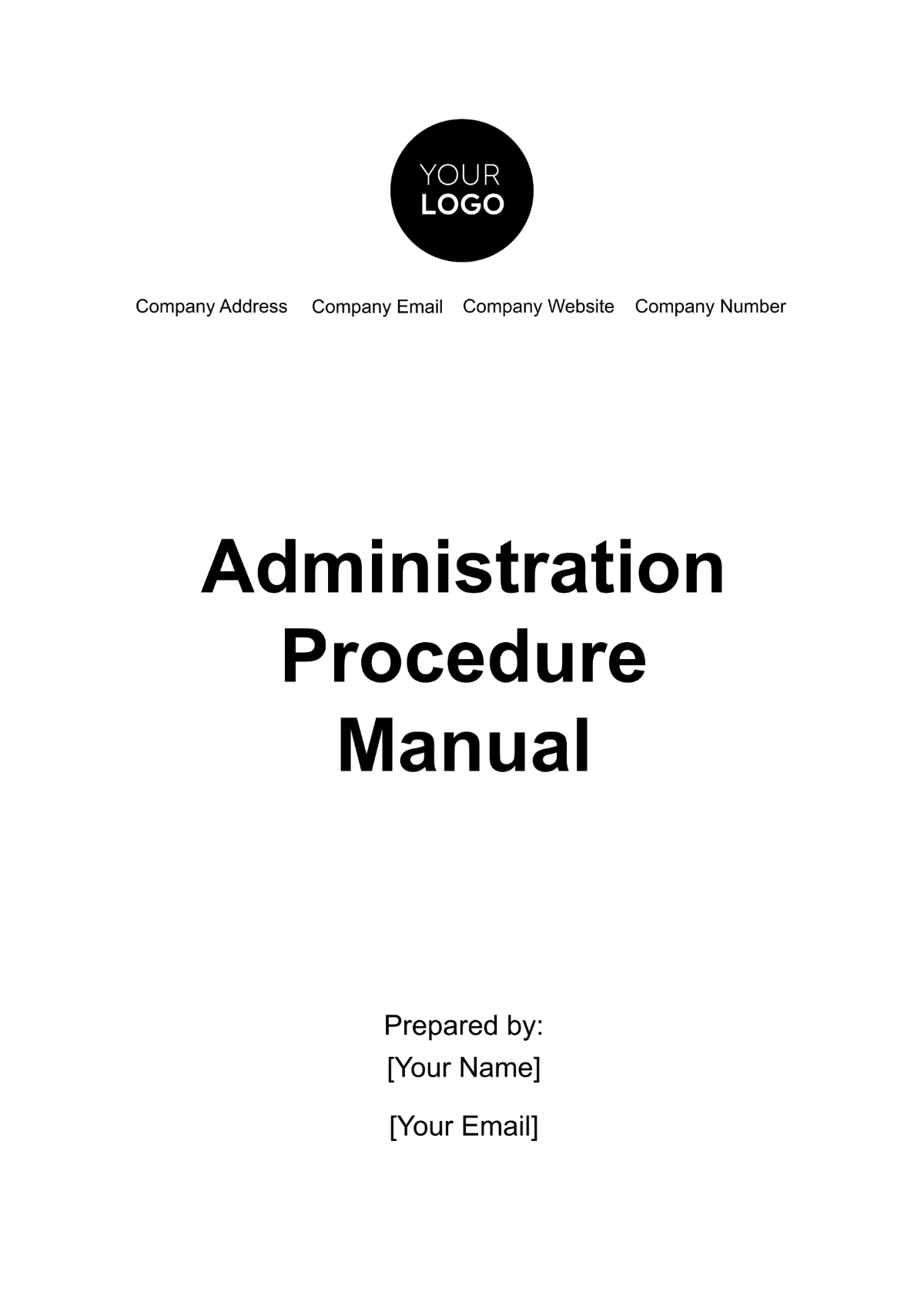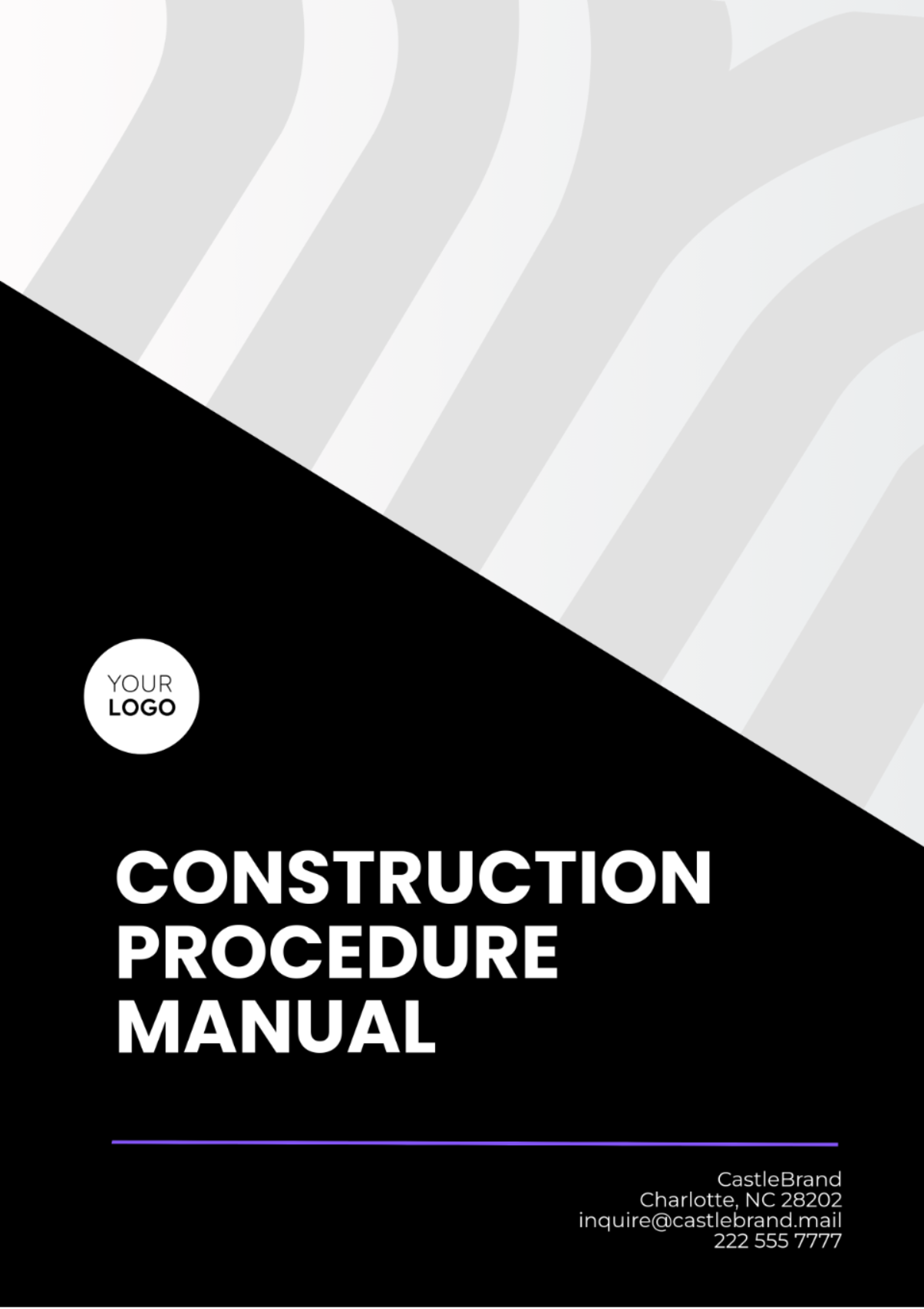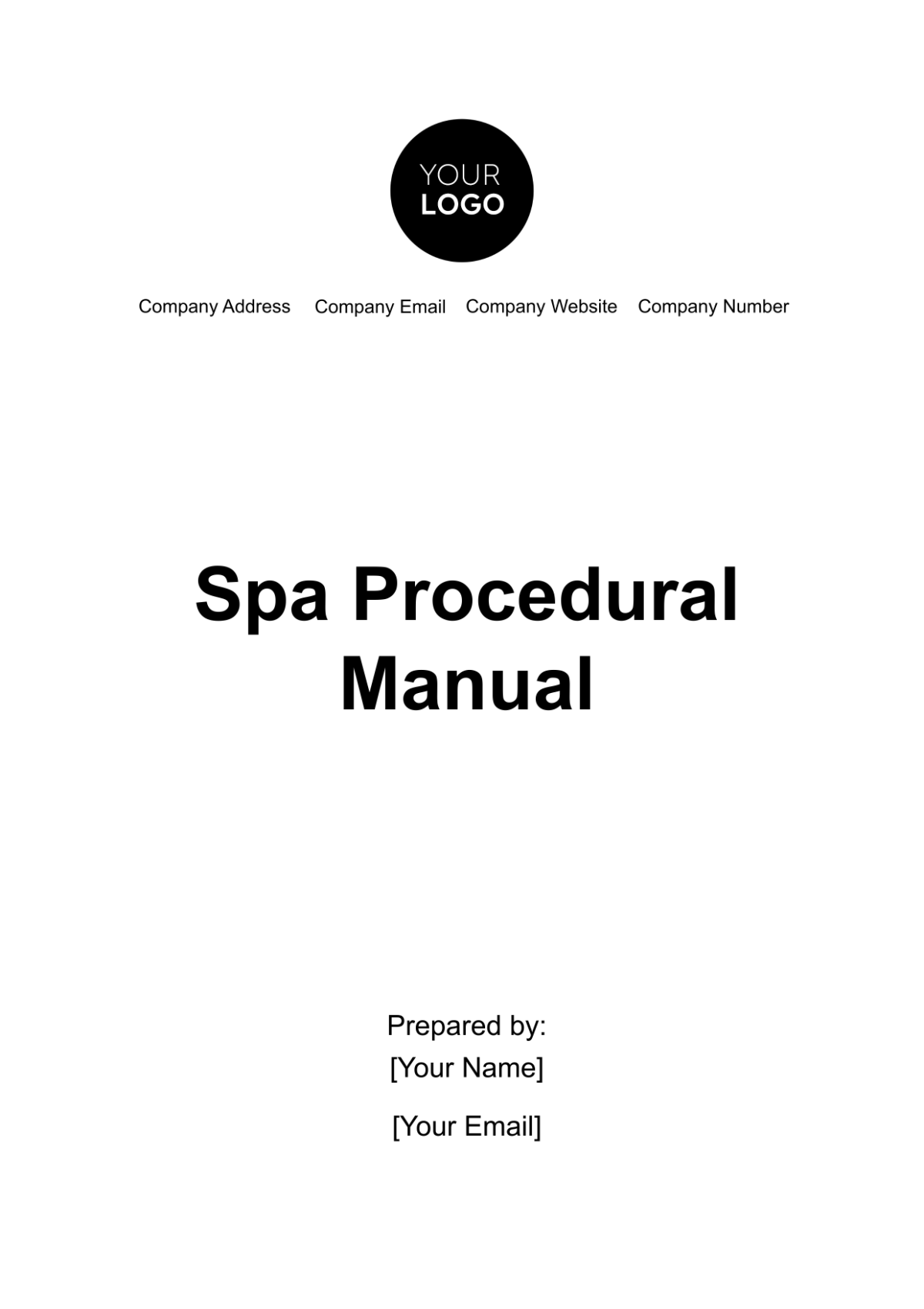Cleaning Services Marketing Policy & Procedure Manual
I. Introduction
[Your Company Name] embarks on a journey to elevate cleaning services through strategic marketing. This manual serves as our compass, guiding us toward success. Let’s delve into the details:
A. Purpose
Guidance for Excellence: The purpose of this manual is to provide clear guidelines and instructions for our marketing team. By adhering to these policies, we ensure excellence in our marketing efforts.
Consistent Approach: We aim to create a consistent approach across all marketing channels, reinforcing our brand identity and values.
Empowering Creativity: Beyond mere rules, this manual empowers our team to think creatively within the defined framework, fostering innovation.
B. Importance
Brand Resonance: Effective marketing enhances our brand resonance. It ensures that our name resonates with potential clients, creating trust and familiarity.
Business Growth: Well-executed marketing campaigns attract leads, translating into business growth. Our success directly impacts our team’s well-being and job security.
Competitive Edge: Strategic marketing sets us apart from competitors, positioning us as the preferred choice for cleaning services. Our reputation precedes us.
C. Target Audience of this Manual
Marketing Team: Our dedicated professionals responsible for planning, executing, and evaluating marketing activities. They are the architects of our brand perception.
Management: Leaders overseeing marketing efforts and making strategic decisions. Their vision shapes our marketing landscape.
Sales Team: Collaborators interacting with clients, benefiting from understanding our marketing approach. They are our frontline ambassadors.
Other Relevant Staff: Anyone promoting our services or communicating with clients. Their alignment with our marketing principles matters. This may include the cleaning staff.
D. Scope
Inclusivity: This manual covers both digital and traditional marketing strategies. From pixels to print, we leave no stone unturned.
Adaptability: It adapts to changes in market dynamics and technological advancements. Our agility ensures relevance.
Continuous Improvement: Regular updates ensure alignment with industry trends. We learn, iterate, and thrive.
II. Marketing Strategy
Our marketing strategy is multifaceted, combining creativity and data-driven decisions. Let’s explore the key components:
A. Market Research and Analysis
Customer Segmentation
1.1. Identify specific customer segments (e.g., residential, commercial, industrial) to tailor our messages effectively.
1.2. Understand their pain points, preferences, and decision-making criteria.
1.3. Map their buyer’s journey—from awareness to conversion.
Competitor Insights
2.1. Study our competitors’ strengths, weaknesses, and unique selling points.
2.2. Analyze their marketing tactics, pricing strategies, and customer engagement.
2.3. Identify gaps we can exploit and areas where we can differentiate.
Trends and Preferences
3.1. Stay informed about industry trends, technological advancements, and shifts in consumer behavior.
3.2. Monitor emerging platforms, tools, and communication channels.
3.3. Anticipate changes and adapt proactively.
B. Branding and Positioning
Brand Identity
1.1. Define our brand elements consistently (logo, colors, fonts) across all marketing materials.
1.2. Craft a compelling brand story that resonates with our audience.
1.3. Ensure our brand reflects our core values—reliability, integrity, and excellence.
Positioning Statement
2.1. Articulate our unique value proposition clearly.
2.2. Highlight what sets us apart: personalized service, eco-conscious practices, or exceptional customer support.
2.3. Position ourselves as the solution to our clients’ cleaning needs.
C. Marketing Channels
Online Channels
1.1. Website
1.1.1. Maintain an informative and user-friendly website.
1.1.2. Optimize it for search engines (SEO) to improve online visibility.
1.1.3. Showcase our services, testimonials, and case studies.
1.2. Social Media
1.2.1. Regularly update profiles (Facebook, Instagram, LinkedIn).
1.2.2. Engage with followers, respond to inquiries, and share valuable content.
1.2.3. Leverage paid advertising where relevant.
1.3. Email Marketing
1.3.1. Build an email list of potential clients.
1.3.2. Send newsletters, promotions, and educational content.
Offline Channels
2.1. Print Collateral
2.1.1. Design and distribute brochures, flyers, and business cards.
2.1.2. Ensure consistency in branding.
2.1.3. Include compelling calls-to-action (CTAs).
2.2. Networking
2.2.1. Attend industry events, trade shows, and local business gatherings.
2.2.2. Cultivate relationships with property managers, real estate agents, and community influencers.
2.2.3. Seek opportunities for cross-promotion.
D. Promotions and Special Offers
Seasonal Discounts
1.1. Spring Cleaning Special: Annually, during the spring season, offer a discounted package for thorough home or office cleaning. Highlight the freshness and renewal associated with spring.
1.2. Holiday Promotions: Tie promotions to major holidays (e.g., Christmas, New Year, Thanksgiving). Consider offering discounts for pre-holiday cleaning or post-celebration cleanup.
1.3. Refer-a-Friend Discount: Encourage existing clients to refer friends and family. Provide a discount to both the referrer and the new client upon successful referral.
Customer Loyalty Programs
2.1. Points System: Implement a loyalty points system. Clients earn points for each service availed. Accumulated points can be redeemed for discounts or free add-on services.
2.2. Tiered Rewards: Create tiers (e.g., Silver, Gold, Platinum) based on the frequency of service usage. Higher tiers unlock exclusive discounts or priority scheduling.
2.3. Anniversary Discounts: Celebrate client anniversaries (e.g., one year of service) by offering a special discount as a token of appreciation.
Referral Incentives
3.1. Client Testimonials: Encourage clients to share their positive experiences. Offer a discount for submitting a testimonial or review.
3.2. Social Media Shares: Reward clients who share our social media posts. This expands our reach and promotes brand awareness.
3.3. Neighborhood Campaigns: Target specific neighborhoods. If a client refers us to a neighbor, both receive a discount.
Bundle Deals
4.1. Comprehensive Package: Combine multiple services (e.g., carpet cleaning, window washing, upholstery cleaning) into a comprehensive package at a discounted rate.
4.2. New Client Welcome Package: Offer a discounted bundle for first-time clients. Include essential services to showcase our expertise.
Limited-Time Offers
5.1. Flash Sales: Create urgency by announcing flash sales (e.g., 24-hour window). Highlight limited availability.
5.2. Event-Based Discounts: Tie discounts to local events (e.g., community fairs, home expos). Attendees receive a special offer.
E. Measurement and Analytics
Key Performance Indicators (KPIs)
1.1. Website Traffic: Monitor the number of visitors, unique sessions, and page views on our website. Analyze which pages attract the most traffic.
1.2. Conversion Rates: Calculate the percentage of website visitors who take desired actions (e.g., filling out a contact form, requesting a quote).
1.3. Social Media Engagement: Track likes, shares, comments, and follower growth.
1.4. Email Open Rates: Measure how many recipients open our marketing emails.
1.5. Return on Investment (ROI): Evaluate the effectiveness of our marketing campaigns in terms of revenue generated.
Feedback Loop
2.1. Client Surveys: Regularly collect feedback from clients. Understand their satisfaction levels, pain points, and suggestions for improvement.
2.2. A/B Testing: Experiment with different marketing approaches (e.g., email subject lines, ad copy) and analyze which performs better.
2.3. Competitor Benchmarking: Compare our performance metrics with industry benchmarks and competitors.
F. Continuous Improvement
Data-Driven Decisions
1.1. Regularly review our analytics data.
1.2. Identify trends, patterns, and areas for improvement.
1.3. Adjust our strategies based on insights.
Agile Adaptation
2.1. Be open to change. If a marketing channel isn’t yielding results, pivot.
2.2. Stay informed about emerging technologies and marketing tools.
2.3. Test new ideas and iterate.
Training and Skill Development
3.1. Invest in our team’s marketing skills.
3.2. Attend workshops, webinars, and industry conferences.
3.3. Encourage cross-functional learning.
III. Digital Marketing
A. Website and SEO
Website Maintenance
1.1. Regularly update our website content to reflect our latest services, testimonials, and success stories.
1.2. Optimize loading speed by compressing images, minimizing code, and leveraging browser caching.
1.3. Monitor broken links and promptly redirect or fix them to enhance user experience.
Search Engine Optimization (SEO)
2.1. Conduct thorough keyword research to identify relevant terms related to cleaning services.
2.2. Optimize website content, meta tags, and image alt text for search engines.
2.3. Build high-quality backlinks from reputable websites to improve our site’s authority.
User Experience (UX)
3.1. Ensure our website is mobile-responsive and easy to navigate on various devices.
3.2. Create clear calls-to-action (CTAs) that guide visitors toward desired actions (e.g., requesting a quote, scheduling a service).
3.3. Implement live chat or chatbot features for instant customer assistance.
B. Social Media Marketing
Content Strategy
1.1. Develop a comprehensive content calendar that aligns with our marketing goals.
1.2. Share informative articles, showcase before-and-after photos, create engaging videos, and design eye-catching infographics.
1.3. Tailor content for each platform. Instagram for visuals, LinkedIn for thought leadership, and Facebook for community engagement.
Paid Advertising
2.1. Run targeted social media ads based on demographics, interests, and behavior.
2.2. Define specific goals for each campaign (e.g., lead generation, brand awareness, event promotion).
2.3. Monitor ad performance metrics (click-through rates, conversions) and adjust budgets accordingly.
Influencer Collaborations
3.1. Identify local influencers or micro-influencers with an engaged audience.
3.2. Partner with them for sponsored posts or stories related to our cleaning services.
3.3. Leverage their authenticity and reach to expand our brand visibility.
IV. Traditional Marketing
A. Print Collateral
Brochures and Flyers
1.1. Design visually appealing brochures that showcase our range of services.
1.2. Include compelling headlines, customer testimonials, and clear calls-to-action.
1.3. Distribute them strategically at local events, community centers, and real estate offices.
Business Cards
2.1. Create professional business cards for our team members.
2.2. Include essential contact information (phone, email, website) and our brand logo.
2.3. Use both sides of the card to highlight key services or special offers.
Direct Mail Campaigns
3.1. Segment our client database based on demographics or service history.
3.2. Send targeted mailers with personalized messages and exclusive discounts.
3.3. Track response rates to measure campaign effectiveness.
B. Networking and Referrals
Industry Events
1.1. Attend industry-specific conferences, trade shows, and networking events.
1.2. Exchange business cards, engage in meaningful conversations, and build relationships.
1.3. Consider sponsoring or hosting a booth to showcase our services.
Referral Partnerships
2.1. Collaborate with related businesses (e.g., real estate agencies, property management companies).
2.2. Offer referral incentives (discounts, commission) for successful leads.
2.3. Maintain open communication channels with our referral partners.
Community Involvement
3.1. Participate in local community events, charity drives, or cleanup initiatives.
3.2. Position ourselves as a responsible and caring local business.
3.3. Sponsor or organize neighborhood cleanups to demonstrate our commitment.
C. Event Marketing
Open Houses and Launch Events
1.1. Host open houses at our office or showcase model homes (if applicable).
1.2. Invite potential clients, realtors, and local influencers.
1.3. Provide live demonstrations of our cleaning techniques.
Workshops and Seminars
2.1. Organize educational workshops on home maintenance, eco-friendly cleaning, or organizing tips.
2.2. Partner with local experts (interior designers, decluttering specialists) for added credibility.
2.3. Collect attendee information for follow-up marketing.
Charity Drives and Community Days
3.1. Collaborate with local charities or schools for joint events.
3.2. Offer free cleaning services for community centers, schools, or senior centers.
3.3. Use these events as opportunities to connect with residents and promote our brand.
V. Growth Strategies
The following table outlines essential growth strategies for our cleaning business:
Strategy | Description |
|---|---|
Client Referral Program | Encourage existing clients to refer new customers. Offer incentives (discounts, free services) for successful referrals. |
Upselling and Cross-Selling | When providing a service, identify additional needs (e.g., carpet cleaning after regular cleaning). Offer bundled packages or discounts. |
Online Reviews and Testimonials | Actively seek reviews from satisfied clients. Positive reviews build trust and attract new clients. |
Local SEO Optimization | Optimize our online presence for local searches. Claim our Google My Business listing and ensure accurate information. |
Targeted Email Campaigns | Regularly communicate with existing clients via email. Share cleaning tips, special offers, and updates. |
A. Client Referral Program
Word-of-mouth referrals are powerful because they come from satisfied clients who have experienced our services firsthand. When clients refer their friends, family, or colleagues, it’s a vote of confidence in our brand. These referrals come with built-in trust, making them highly valuable.
The importance of a referral program lies in its ability to:
Expand Our Reach: Referrals introduce us to new audiences without significant marketing costs.
Enhance Trust: Referred clients already trust our brand based on the referrer’s recommendation.
Foster Client Loyalty: Clients who refer others feel a deeper connection to our brand.
B. Upselling and Cross-Selling
Upselling and cross-selling strategies capitalize on our existing client relationships. Here’s how they work:
Upselling: When we upsell, we encourage clients to purchase a higher-tier service or add-ons. For example, after a regular cleaning, we might recommend deep carpet cleaning or upholstery cleaning. Upselling benefits us by:
Increasing the average transaction value per client.
Demonstrating our expertise and range of services.
Enhancing client satisfaction by addressing additional needs.
Cross-Selling: Cross-selling involves offering related services. For instance, if we provide home cleaning, we can cross-sell organizing services or window cleaning. Cross-selling benefits us by:
Expanding our service portfolio.
Creating convenience for clients (one-stop solution).
Boosting overall revenue.
C. Online Reviews and Testimonials
Online reputation significantly influences potential clients’ decisions. Positive reviews and testimonials serve as social proof of our reliability and quality. Here’s why they matter:
Credibility: Genuine reviews build trust. Prospective clients rely on the experiences of others to gauge our service quality.
SEO Impact: Positive reviews improve our search engine rankings. Search engines recognize user-generated content as valuable.
Conversion Booster: When clients share their positive experiences, it encourages others to choose us. Reviews act as endorsements.
D. Local SEO Optimization
Local SEO (Search Engine Optimization) ensures that our business appears prominently in local search results. Here’s why it’s crucial:
Local Visibility: When potential clients search for cleaning services near them, we want our business to show up. Local SEO helps us appear in local map searches (Google Maps, Yelp, etc.).
Mobile Searches: Many clients search for services on their mobile devices while on the go. Local optimization ensures we’re visible to them.
Competitive Edge: Local SEO sets us apart from national competitors. We cater to our immediate community, which builds trust and relevance.
E. Targeted Email Campaigns
Email remains an effective channel for client retention and nurturing. Here’s why:
Client Retention: Regular emails remind clients of our services and encourage repeat business.
Educational Content: Share cleaning tips, seasonal offers, and educational content.
Personalization: Targeted emails based on client preferences enhance engagement.
Our growth strategies are interconnected. By implementing a holistic approach, we create a virtuous cycle. We ensure exceptional service that leads to positive reviews and referrals, a strong brand reputation attracts new clients and increase revenue.
VI. Review and Revision
In the dynamic landscape of marketing, adaptability is key. Our manual must evolve alongside our business. Let’s delve into the essential aspects of review and revision.
A. Review
Annual Assessment
1.1. Perform an annual review of the entire manual. Take note of any areas that require attention or contain outdated information.
1.2. Evaluate Relevance: Some policies may no longer apply due to organizational growth or changes in industry practices. Identify these and consider updates.
1.3. Stay Compliant: Ensure that our policies align with legal requirements and industry standards. Regular reviews help us stay on track.
By-Law Alignment
2.1. Check if our by-laws have changed. If so, our policies and procedures may need adjustments to maintain consistency.
2.2. Legal Environment: Consider shifts in local, state, or federal laws that impact our operations. Our manual should reflect these changes accurately.
B. Revision
Timely Clarifications
1.1. Technical updates occur between scheduled reviews. These may clarify existing policies or communicate minor procedural changes.
1.2. Flag Changes: Even if seemingly minor, flag these updates for inclusion in the formal review process. Consistency matters.
Human Error Prevention
2.1. Consistency Matters: Inconsistent cleaning standards can harm our reputation and financial stability. Our manual should guide uniform practices.
2.2. Document All Activities: Convert day-to-day activities into well-defined processes. Clearly outline each step to minimize errors.

















































